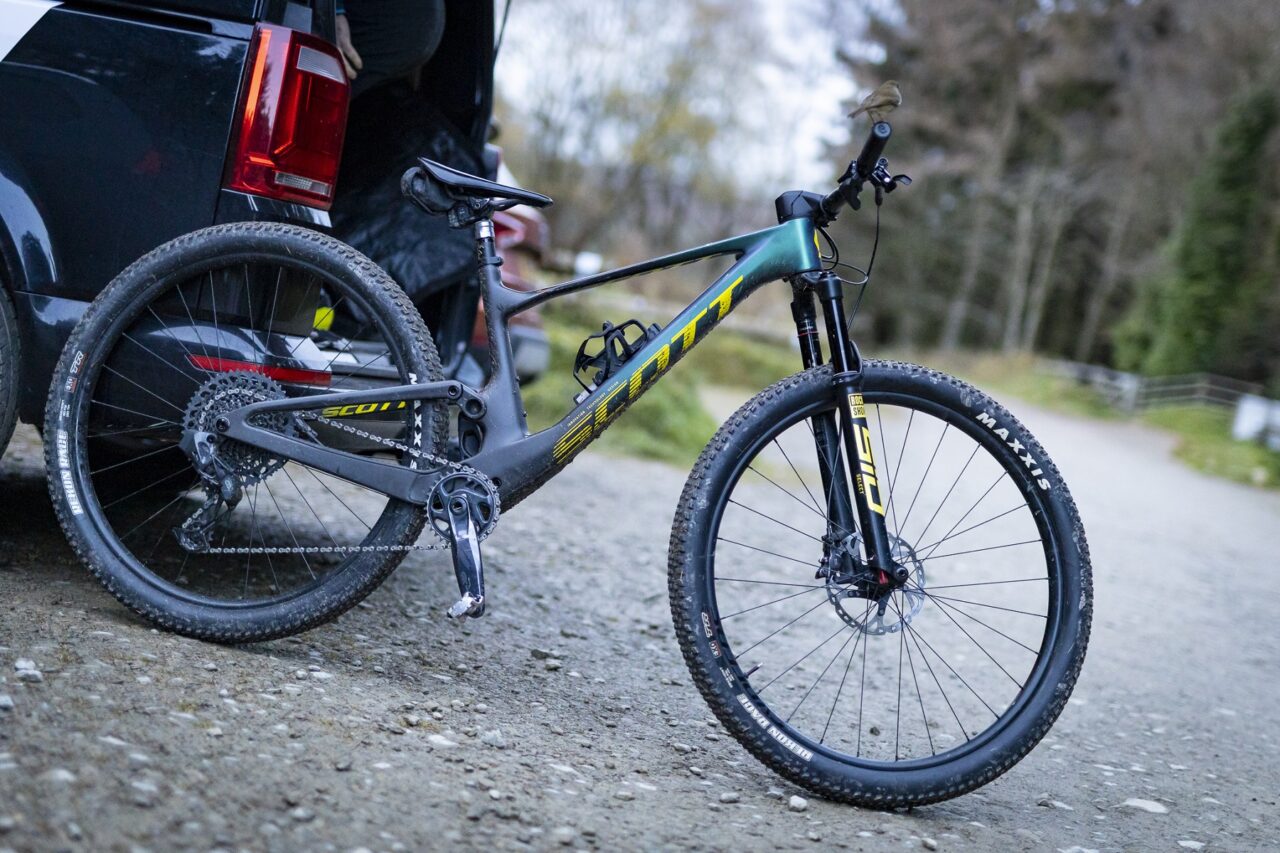

Since its inception in 2007, the Scott Spark has been at the cutting edge of technology. With super-light carbon frames, custom shocks and the very best components, it’s no wonder why the Spark is the most successful cross country race bike of all time. For 2022 the all-new Spark RC looks to reset the rulebook again…
We got the chance for an exclusive first look and ride review with legendary racer and Scott Ambassador Nick Craig to see if the new one really is a worthy successor!
The Tech
The new Spark gets a bold new look with an integrated rear shock. It really is a ‘bold’ new look, as Bold is a brand that Scott purchased a majority share in a few years ago and the integrated shock was their signature design. Given their investment, it’s a feature we’ll likely be seeing more of in the Scott range over the next few years. Not only does it look neater but it also means the frame can be made lighter, stiffer and with a lower centre of gravity - all of which make it faster, more efficient and more fun to ride!
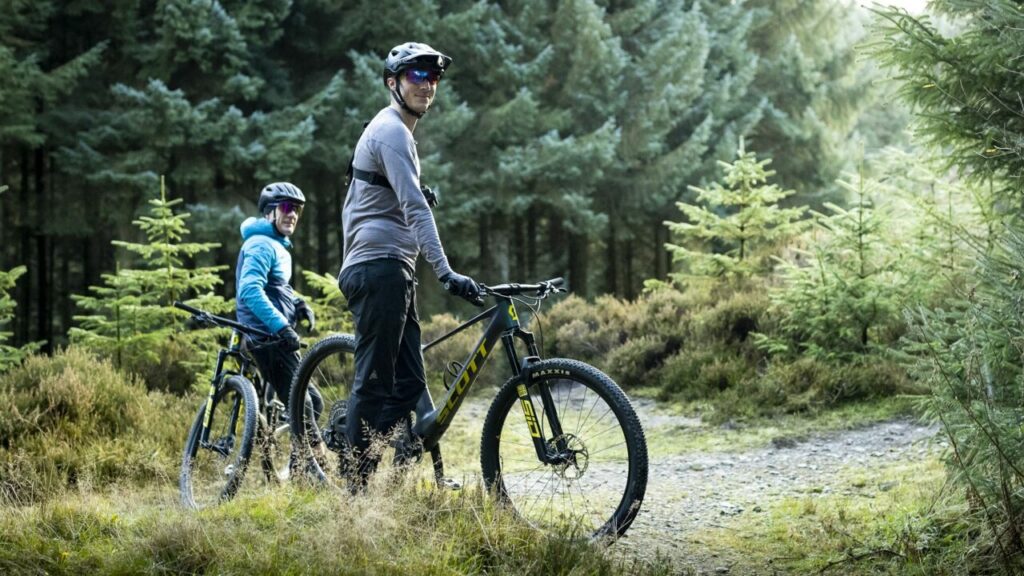
The result for the Spark is a super clean look and that’s the first thing that really struck me when viewing the bike in the flesh for the first time. The clean lines, hidden cables in the frame that slide through the stem and into the headset make the usual rat’s nest of cables look a whole lot neater and way quieter too. Just because everything is hidden doesn’t mean it’s hard to work on though, there’s a neat hatch under the downtube that makes accessing the shock and cables a breeze. There’s even a sag indicator and a little viewing window to make sure the shock is set up just as you need! Hidden shock aside, the suspension layout is actually very similar to before; a single piece rear triangle with flex built into the seat stays and a rocker link compressing the shock.
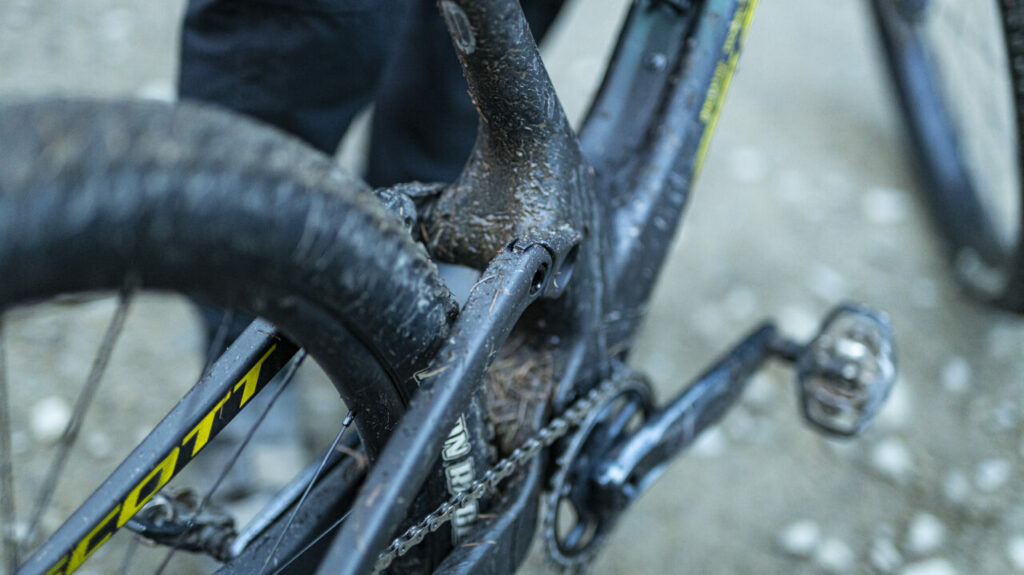
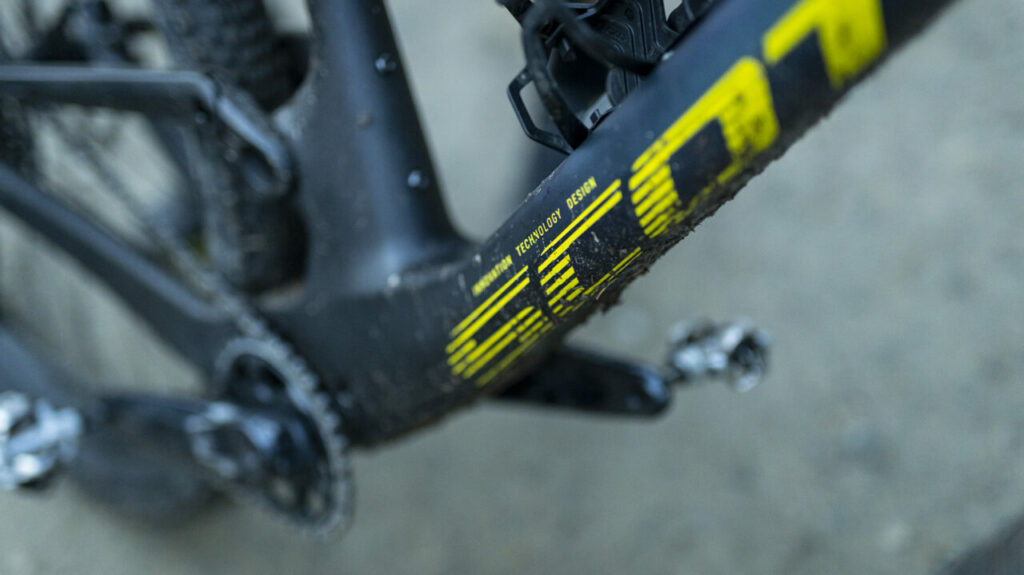
The Scott Twinloc remote system is on the right side of the handlebar for on-the-fly fork/shock adjustments and has three modes; ‘Descend’, ‘Traction Control’ and ‘Lockout’. ‘Descend’ keeps everything open and lets the suspension do its job, while ‘Traction’ reduces the rear shock travel down to 85mm and firms up both the fork and shock as well. Lockout does exactly what it says on the tin.
One of the major changes is the geometry and amount of suspension the frame and fork offer up. Starting with the suspension, the new Spark RC jumps up to 120mm of travel at both ends of the bike whilst the more trail orientated Spark 900 gets a 130mm fork. To go with the increased capability that extra travel brings, Scott have given the Spark geometry a makeover. The Spark RC has a much slacker 67.2-degree head angle, steeper 76.6-degree seat angle and longer 471mm reach (for size Large). That’s some seriously progressive geometry for a cross-country race bike! The Spark also comes with a clever adjustable headset that allows you to slacken or steepen the bike by 0.6 degrees.
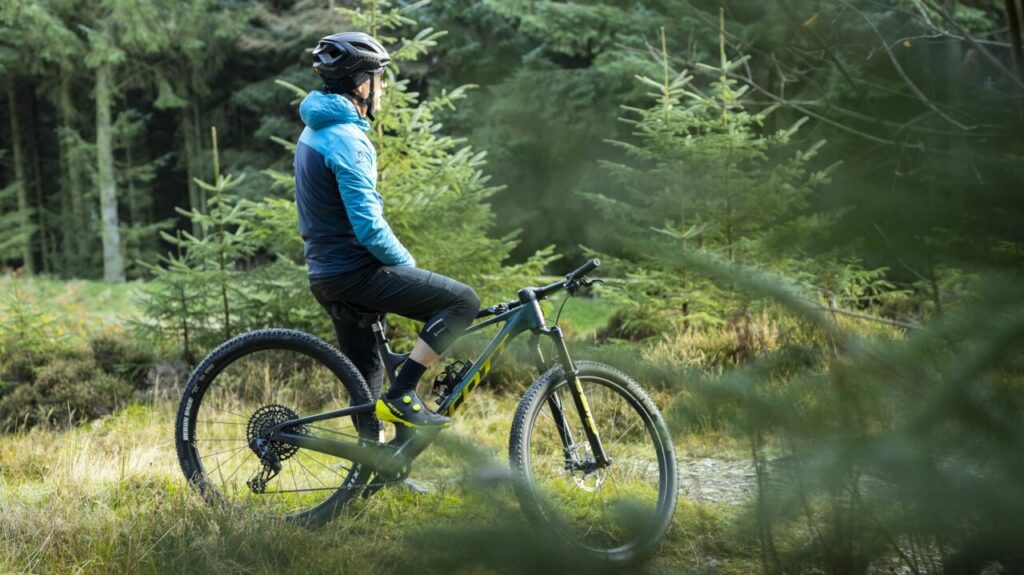
The Spark looks clean, is super-light, stiff and carries some very progressive geometry numbers. This isn’t a slacked out downcountry bike though like the Transition Spur (which on paper is similar). Nope, the Spark RC is a race bike through and through and there are a few components that make it blatantly obvious as soon as you swing a leg over it. First is the slammed -12 degree 70mm long stem that’s paired with a 740mm wide flat handlebar. Straight away this puts you in a seriously racy riding position that gives a great view of the sparsely treaded Maxxis Rekon Race tyres. They may be 2.4 inches wide and sit on wide 30mm ID rims, but these are pinner tyres built for speed over grip.
One thing that’s different on the RC Team Issue AXS bike (as well as the RC Team and Comp) is the lack of a dropper post; all models above this £4,599 model come with a Fox Transfer SL as standard.
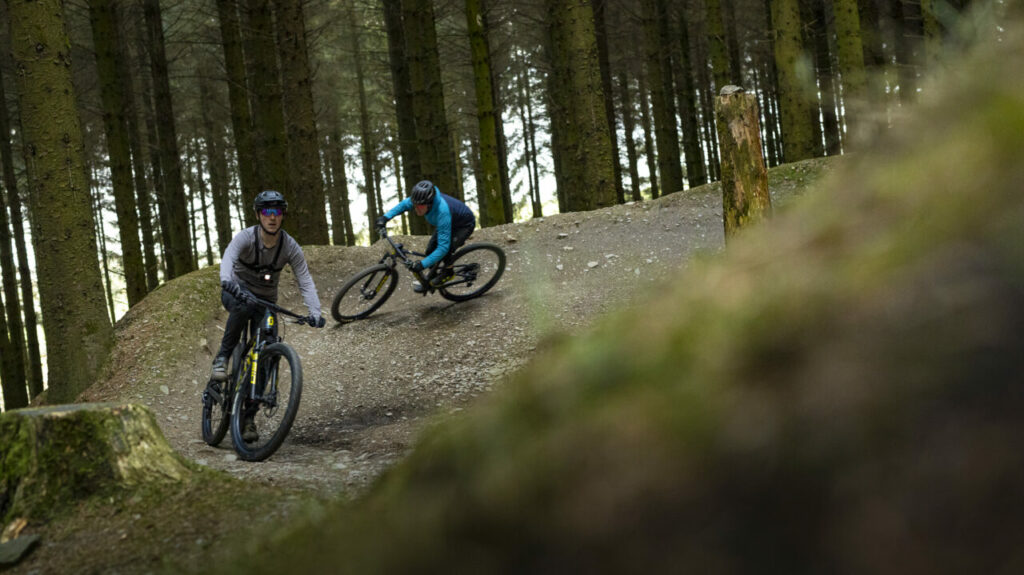
The Spark RC Team Issue AXS that I rode is the mid-range bike and comes with a solid spec. A Rockshox Sid fork and NUDE shock keep things under control and the SRAM GX Eagle AXS wireless drivetrain powers your forward. The GX AXS controller also gets the much better Rocker Paddle over the stock one and it is just so much easier and more intuitive to use (a small detail, but big props to Scott for sweating the details!) Slowing you down are Shimano XT M8100 brakes with 2-piston calipers. All this adds up to a bike that weighs a claimed 11.55kg so probably close to 12kg once a bottle cage and pedals are fitted.
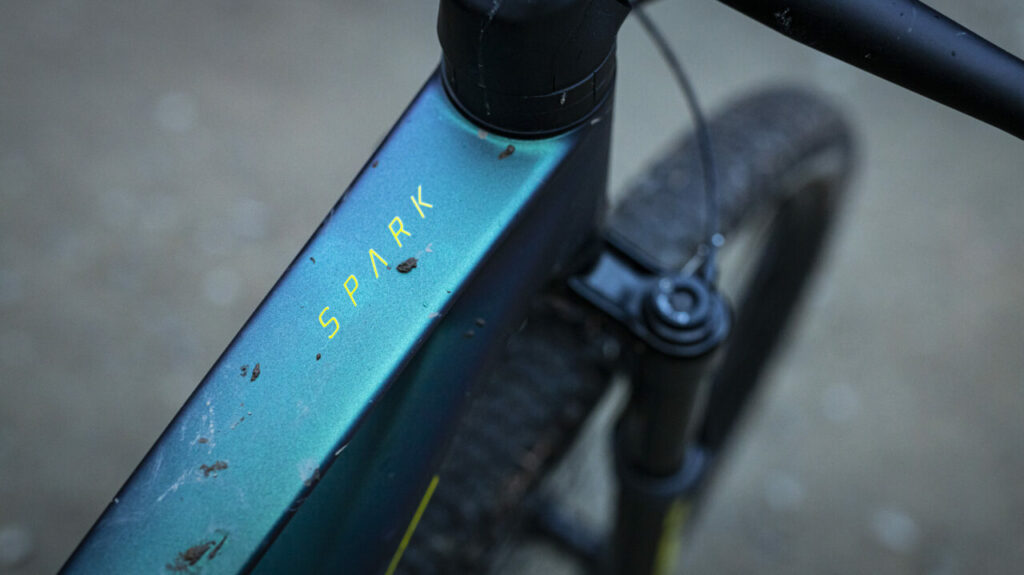
The Ride – Climbing
The most controversial aspect of the new Spark is the move to a 120mm travel format on the RC version. Traditionally cross-country bikes have less suspension so they can be as efficient and fast on the climbs. World Cup courses and cross-country racing has seen more technicality added in recent years though so bump up in travel paired with aggressive geometry is new ground that Scott have absolutely nailed.
The new Spark RC flies up the climbs. Honestly, I was blown away by how efficient and fast the bike climbed and that’s just in the ‘Descend’ mode! On the technical, tight switchback climbs of our test loop, I left the bike in this fully open position for most of the lap and it had bundles of traction for clawing up the steepest grades and sharp handling that made tight uphill corners a breeze. I’ve ridden the trails at Llandegla for most of my mountain biking life and I can’t recall a bike that made the climbs that easy. On the more open, flatter sections, knocking the Twinloc lever to ‘Traction Control’ bought a slight boost in efficiency and while I never touched the ‘Lockout’ mode, I can see how it would be great for those flat-out sprints to the line in a race.
The racy cockpit with its 740mm wide bar and slammed stem was comfortable all day long and I had no aches or pains after 20 miles of fast paced riding. Overall, the Spark RC is a crazy climber - light, efficient and just plain rapid. A proper cross-country race bike for sure!
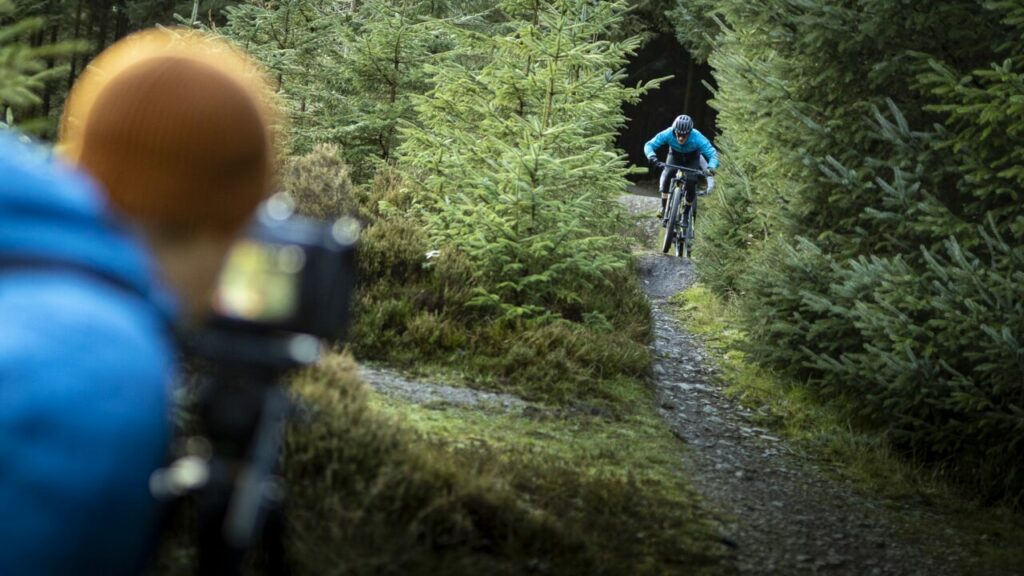
The Ride – Descending
I’m not going to lie, descending on cross-country race bikes is not high on my list of favourite activities. I love a lightweight bike but give me all the mod cons for the descents please! The Spark blurs the line between a cross-country race bike and a trail/downcountry bike though and was supreme when things got steep.
The Spark flies downhill and corners incredibly well. It felt planted and controlled yet immensely agile at the same time. It didn’t get battered around on rough sections or bullied by roots and rocks. Even with the Maxxis Rekon Race tyres, I could push hard pretty much everywhere and still felt like the bike had more in reserve. But those reserves absolutely need a dropper post to access them.
It doesn’t even need a wider, higher riser bar, short stem or a grippier front tyre. With a dropper post, I have no doubt the Spark RC would be a real ripper of a cross-country race bike that on anything but the rowdiest descents, could easily keep pace with bikes that have a far bigger descending bias.
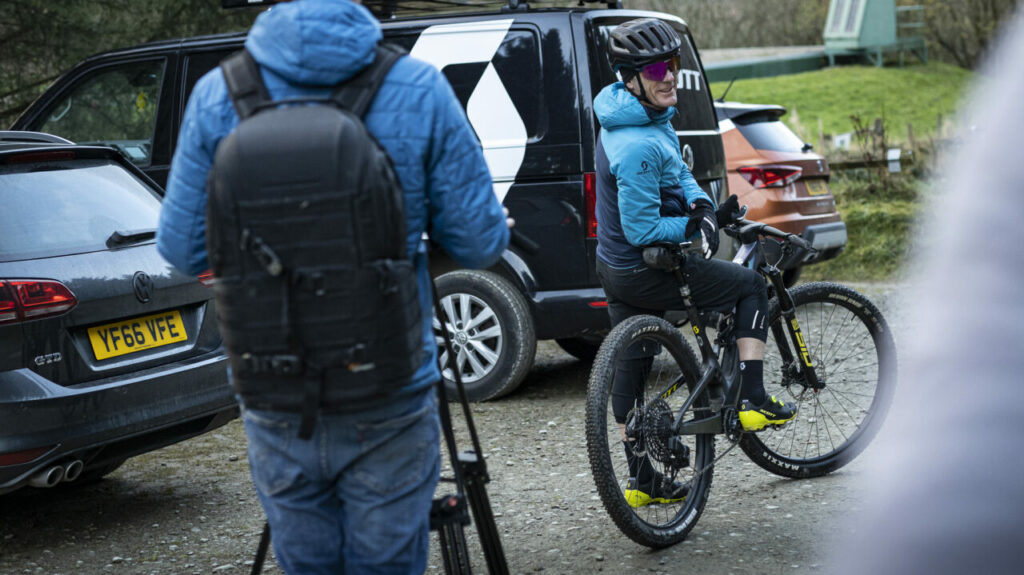
The bottom line is the new Spark RC is a worthy successor to the previous generation… and then some.
It's immensely fast on the climbs, devours singletrack for breakfast and can descend way beyond the level a cross country race bike should be capable of. If you want a bike you can properly race (and win) on weekends but still like to get down and party in the week, the Scott Spark RC might just be one of the best bikes on the market today.
Enjoyed this? Read more of our latest news:
Where To Next?
Looking for the latest in all things cycling, running, fitness and more? Check out our wide range from top brands.
Come and visit us at our store, showroom in Wrexham.
Interested in everything we do? Catch up on all the latest Tweeks Cycles.

